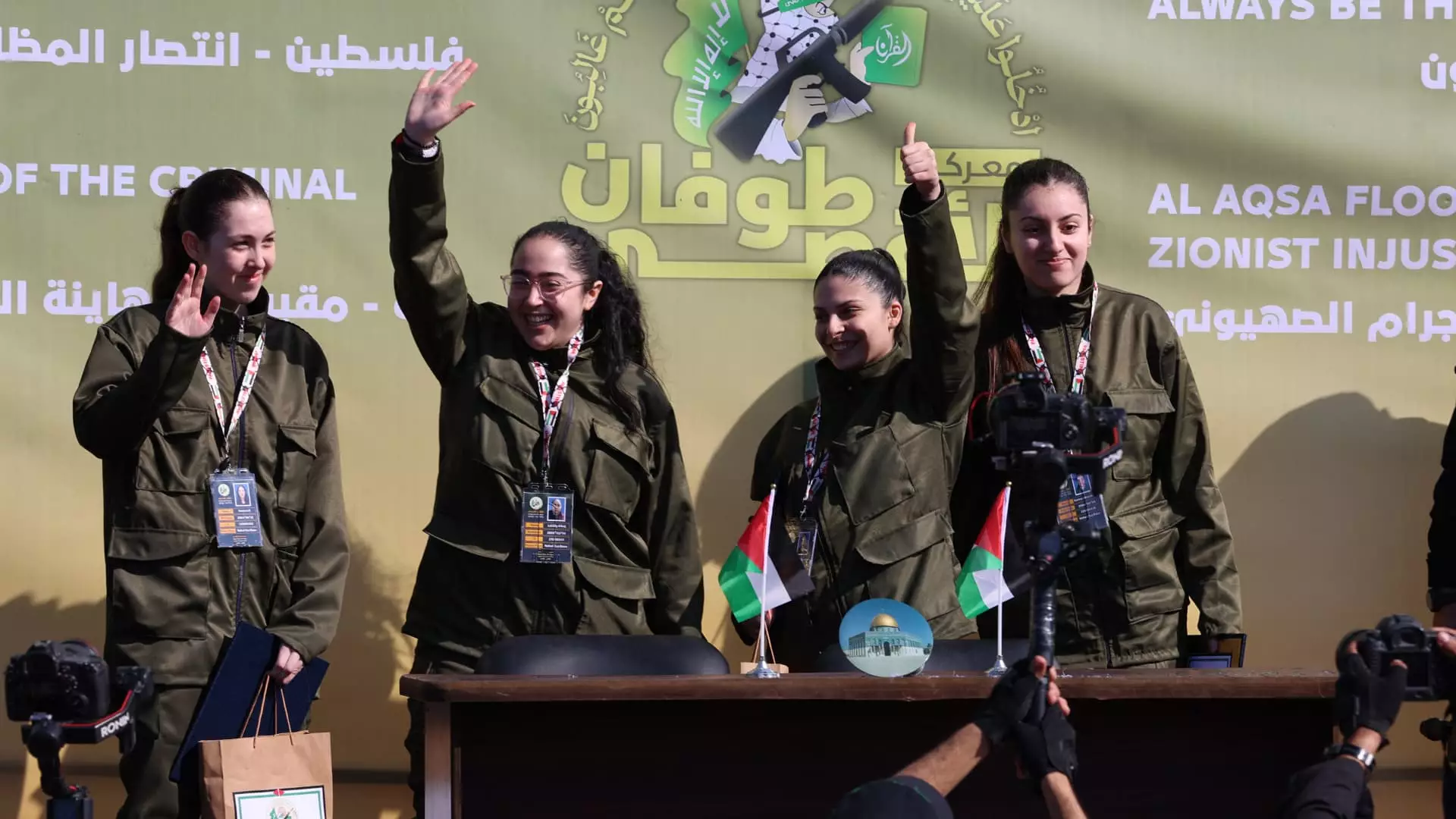The ongoing conflict between Israel and Hamas remains one of the most intricate and painful geopolitical issues, marked by cycles of violence, negotiation, and fragile truces. Among the latest developments, a hostage exchange that transpired on Saturday underscored the delicate balance both sides navigate amidst the longstanding animosity that characterizes their relationship. This article delves into the implications of the recent hostage release, the broader context of the 15-month war in Gaza, and the underlying sentiments that shape this conflict.
Recent Developments: A Fragile Ceasefire
On a significant day for many families, the Palestinian militant group Hamas announced the release of four Israeli female soldiers. This event occurred under the conditions of a ceasefire agreement and involved a substantial exchange of roughly 200 Palestinian prisoners. The hostages—Karina Ariev, Daniella Gilboa, Naama Levy, and Liri Albag—were initially kidnapped when Hamas launched a significant assault on their military post on October 7, 2023. The emotional weight of their return was palpable, as their families rejoiced at the sight of them, celebrating the moment of reunion while grappling with the harsh realities of ongoing conflict.
Hamas’s integration of the hostages into a public setting in Gaza City, flanked by armed guards and a crowd of supporters, symbolizes the group’s attempt to assert its power and legitimacy within the region. In stark contrast, Israeli citizens gathered in Tel Aviv to witness the handover live, their mixture of joy at the release tempered by disappointment over a civilian hostage who was inexplicably not released as planned. This unpredictability of negotiations illustrates the frustration and pain experienced by families trapped in this cycle of violence.
The hostage exchange agreement has inherent complexities that warrant critical reflection. While the release of the soldiers has brought immediate emotional relief to their families and supporters, it also raises ethical questions regarding the exchange of life for life, especially when many of the prisoners released include individuals convicted of serious offenses against Israeli nationals. The strategic decision by Hamas to demand the release of convicts serves a dual purpose: it bolsters its standing among supporters while igniting debate in Israeli society about the consequences of such negotiations.
Moreover, the broader framework of the ceasefire raises concerns about its longevity. Though both parties have engaged in preliminary negotiations to resolve outstanding issues, such as the status of the deported individuals and future hostages, the mistrust that has characterized their interactions over decades looms large. The Israeli government’s response to pending negotiations appears firm, with Prime Minister Benjamin Netanyahu asserting that movement into the northern regions of Gaza will be restricted until the situation is addressed.
To appreciate the significance of the recent events, one must contextualize them within the broader historical narrative of the Israeli-Palestinian conflict. It is essential to acknowledge that this exchange is just the latest chapter in a war that erupted following the horrific assault on October 7, which resulted in approximately 1,200 deaths and the abduction of over 250 hostages. The ensuing Israeli military campaign has led to grievous consequences on both sides, with reports indicating that Palestinian casualties have surpassed 47,000, a stark reminder of the human cost of this prolonged conflict.
The loss of Israeli soldiers has also been significant, with over 400 reported deaths. In this agonizing tally of casualties, Hamas’s lack of transparency regarding its own losses only deepens the ambiguity surrounding the ongoing struggle. The conflicting narratives regarding casualties and motives further complicate the already intricate discourse surrounding morality in war.
The recent hostage exchange serves as a poignant reminder of the depth of human emotion amid stark political realities. While it offers a temporary reprieve for some, it also highlights the precarious nature of peace in a region fraught with tension. The road ahead remains uncertain, but this exchange may signal a potential shift in dynamics that might move both parties toward further negotiations. However, any lasting peace will require courageous dialogue and a profound commitment to address the underlying grievances that fuel this tragic and enduring conflict. As both sides grapple with a history of violence, hope remains fragile yet vital for the future of this beleaguered region.



Leave a Reply